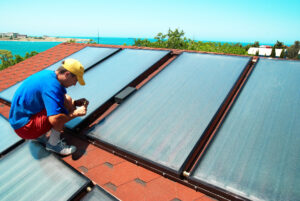In its most recent annual report, according to a New York Times article by Matthew L. Wald, the North American Electric Reliability Council warns that the supply of electrical power is not keeping up with demand [“A Power-Grid Report Suggests Dark Days Ahead,” 15 Oct 2006]. The report indicates that “the amount of power that could be generated or transmitted would drop below the target levels meant to ensure reliability on peak days in Texas, New England, the Mid-Atlantic area and the Midwest during the next two to three years.”
In an earlier post about The Energy Challenge, I noted that this is a global challenge not just a national one. That blog, however, focused on the challenge of protecting the environment while increasing generation capacity. Wald’s article focuses on the U.S. and the simple fact that “companies are not building power plants and power lines fast enough to meet growing demand, according to a group recently assigned by the federal government to assure proper operation of the power grid.” The reason that the North American Electric Reliability Council report sounds a note of urgency is that the two to three year timeline it discusses is so short that, even if a decision were made today to start building, new plants wouldn’t be on line in time to make a difference.
In another post I wrote [The Future of Nuclear Power], I noted that Constellation Energy may be the first company to build a new reactor in the United States in three decades. I noted that such a decision is risky because building any new power plant is basically a bet about energy demand in the future, but this report makes that risk look fairly small. Most utility companies hedge against loss by pre-selling electricity before they build. The cost, time, and regulatory hurdles for building nuclear plants, however, make that strategy much more difficult to implement.
I noted that some environmentalists laud the fact that nuclear energy is once again receiving attention (because nuclear plants reduce the emissions) but others are less enthusiastic because they fear pollution from nuclear waste. This is one of those situations in which everyone is correct. Nuclear power should receive renewed attention, but moving ahead we need to ensure that all security and environmental concerns are adequately addressed. But Wald’s article highlights the fact that we must move ahead using a combination of new construction and public policy aimed at reducing consumption.
For years, the council has produced often-gloomy annual reports, but this is the first to be officially filed with federal agencies, and to recommend specific action. The report says, for example, that utilities should be encouraged to pursue financial incentives for customers to cut use during peak hours, thereby lowering demand for new power plants and transmission lines. Financial incentives could reward customers’ installation of more efficient equipment or, more drastically, reward a factory for closing on a day when electricity supplies are expected to be tight. The president of the council, Rick P. Sergel, said in a telephone interview, “The situation has existed for a long time, but we cannot let it continue.”
Wald’s article talks about the challenges facing the utility industry — everybody wants electricity, they just don’t want the infrastructure that comes with it in their neighborhood.
Planning for adequate capacity has become more difficult with the restructuring of the electric industry. Where a handful of top-to-bottom companies once generated power, transmitted it and delivered it, hundreds of companies are now involved in only one or two phases of the process. At the same time, getting permits to build new power lines has become more difficult.
Utility companies want to reap the benefits of selling electricity but are hesitant to invest in expensive infrastructure when they can’t be assured that others will match their investment bringing the entire distribution up to snuff. They have tried various other techniques to increase power capacity without having to install more transmission lines.
The actual balance between supply and demand depends in part on changes in technology. Grid operators can now push more power through existing lines, plant operators have found ways to make generators more reliable and sharp increases in the efficiency of how electricity is used could slow demand.
Eventually, however, the distribution grids are going to have to be beefed up through the construction of new plants and transmission lines.
The report predicts that demand will increase by about 19 percent over the next 10 years in the United States, and slightly less in Canada, and that the construction of power plants and transmission lines to carry that load will fall far short of what is needed. In this country, utilities have contracts with new power plants for only about a third of the capacity that will be needed; in Canada, the number is about two-thirds. The number of miles of transmission lines, which can help redistribute supplies, will increase by only about 7 percent, the report said.
My company, Enterra Solutions®, can help utility companies keep costs in check as power plants are built (especially new nuclear plants). Automating rule sets then bundling them into processes that can track the multitude of references involved in guiding and regulating everything from siting, to constructing, to operating power plants can help save time and eliminate waste. Building any new power plant is a significant, long-term investment. The piping, welds, wiring as well as other systems must all be certified so that they meet design specifications. If there are changes made during construction, those changes and any that follow must meet the overall design criteria specified by regulation. Creating an automated system to track and certify each requirement can provide a fully auditable digital system that can be reviewed in real-time, thus, helping accelerate final reviews and allowing the plant to start up more quickly. With “dark days” ahead, speed matters.




